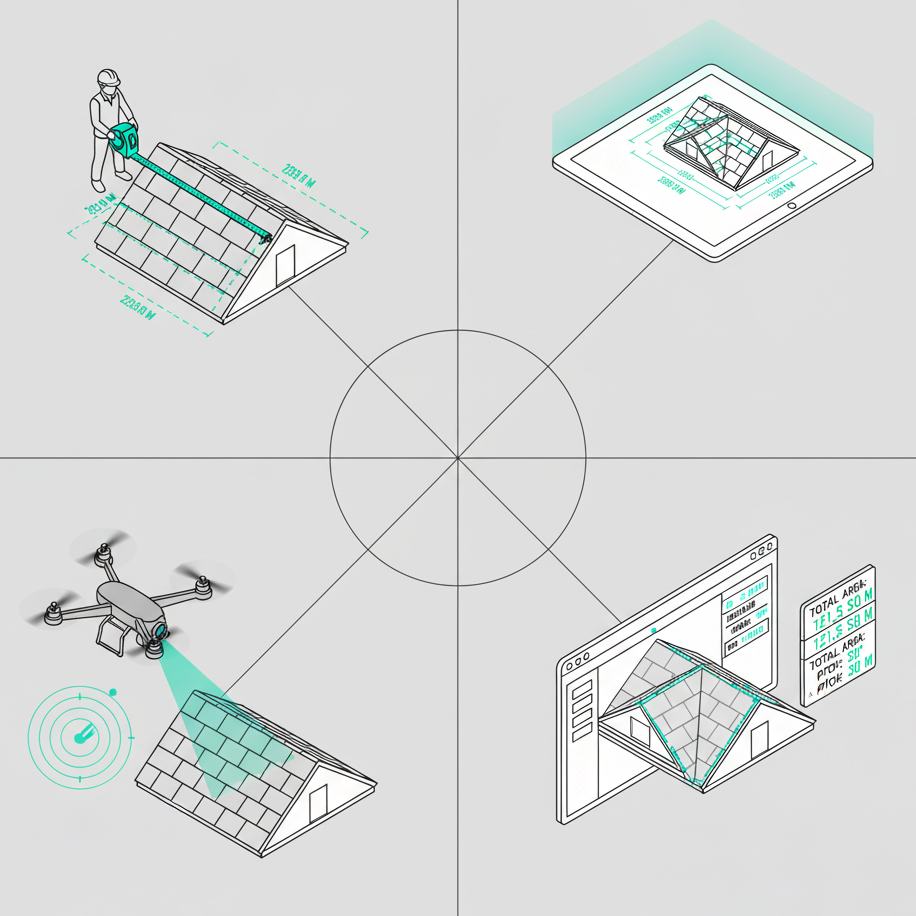The most important roofing terms explained


What is the ridge, gable and ridge, what roof shapes are there and what are the advantages of a hipped roof? Get to know roofing terms now.

Untying (work steps)
Carpenters describe the application of a profile to a so-called cracking floor as lacing. In doing so, they create a two-dimensional representation of the roof profile on a scale of 1:1. You place the components and the markings are transferred, touched on and worked out. Lacing is the process of drawing lines on the drawing board. Most components of a roof are very long, often ten meters and longer, which is why a string is used to draw the lines. Due to lack of space and time, the rice base is rarely used anymore. Instead, carpenters today work with the so-called computational bond and calculate the dimensions and angles by calculation. They use joinery software and joinery machines.
Roof shape
The outer shape of a roof is known as a roof shape. There are many different roof shapes, including:
- flat roof
- gable roof
- pent roof
- hipped roof
- Cripple hipped roof
- tent roof
- conical roof
Roof covering
The outer layer of a roof is called roof covering referred to. It is therefore the roof covering; for pitched roofs, it must be rainproof and for flat roofs waterproof. In Germany, roof tiles are the most commonly used type of roofing.
Roof truss
When a roof structure is composed of individual support elements and forms a traditional roof shape, the entire structure is usually referred to as a roof truss. Most roofs consist of a roof truss and a roof covering, including roof covering called. Typically, this is made of wood; iron or reinforced concrete can be used for large buildings. The roof truss supports the roof covering.
First
In the case of a pitched roof, the top edge, where the two roof surfaces meet in a line, is referred to as a ridge. Special elements protect this transition in particular, for example with ridge tiles or ridge stones. In the case of metal roofs, suitably edged profiles are used. The ridge cover is used to ventilate the roof and protects against penetrating moisture. Carpenters install special ventilation bricks for ventilation. The ridges are usually laid with a drywall ridge roller; alternatively, they are mortared with roofing mortar. Die eaves forms the opposite of the first, as Ortgang This is called the lateral closure.
Gable
The gables only indirectly describe part of the roof; these are the wall surfaces on the side of the roof. In a typical gable roof, the gable is a triangular surface; there is usually enough space here to install a window. So-called Crippled hipped roofs have a trapezoidal pediment, hipped roofs have no pediment.
Ridge
The external intersecting surfaces of two roof surfaces are referred to as degrees. Not every roof has a ridge, see also throat. Roofs with a ridge (and throat) are often found over L-shaped floor plans and on roofs with dormers.
Throat
The internal intersecting surfaces of two roof surfaces are referred to as a throat; not every roof has a roof groove. See also ridge.
Counterbatting
The transverse battens used to fix roof tiles or comparable materials are called counter battens. It ensures ventilation below the roof covering.
Ortgang
The village describes the lateral roof closure, while the First the top end of the pitched roof and the eaves represents the bottom end. As with First Even when going around town, special products protect the roof structure, which also ensure a visually harmonious finish.
Pfetten
The purlins are beams in the roof truss that are parallel to eaves and First run away. They are often used to reinforce the rafters.
Gable roof
In the simplest form, a gable roof consists of two rectangular sloping surfaces on the long sides of a building. A basic distinction is made between a rafter roof and a purlin roof: The rafter roof is a traditional roof structure; this construction is typical for building widths of seven to eight meters and a roof pitch of more than 30 degrees. A special form is the throat beam roof, which is created by installing a throat beam. This makes it possible to implement larger spans. The main feature of the purlin roof is the horizontal purlins, which rest on the inclined rafters.
Rafters
Rafters are beams or supports of the roof truss, which are removed from the eaves for First run away. They wear the roof covering and all roof covering materials. Depending on the roof, this includes roof tiles, slate, roof tiles, etc.
Eaves
The eaves represent the opposite of First Dar. This is the lower end of the inclined roof surface. At the same time, the eaves represent the dripping edge of the roof when it rains. For this reason, the roof drainage system is installed on the eaves. The eaves limit the inclined roof area downwards; the roof ridge is the upper limit. The point of intersection between the roof covering and the vertical outer surface is known as the eaves point. The lateral end of a roof is referred to as Ortgang.
Expiration
Expiration describes a ridge for composite roof surfaces, when the ridge is higher First to a lower lying “falls.”
Hipped roof & cripple hipped roof
While with classic gable roof The sloping surfaces on the long surfaces of the building are rectangular, these side surfaces become trapezoids in the case of a hipped roof. If a triangular and also inclined surface is added to the narrow sides instead of a triangular gable part, a completely formed whale is created. In the case of a hipped roof, this area stretches from the roof ridge to the height of the gutters. When the slope of the whale ends higher up, the roof shape is referred to as a cripple hipped roof. that Cripple hipped roof It is the most common type of hipped roof. It combines the advantages of a hipped roof with those of a gable roof. The cripple whale protects the gable from wind and weather, increases the stability of the roof and at the same time serves as a visual enhancement. This type of roof is particularly popular in regions with harsh weather conditions. Surfaces that do not run vertically divert the wind better and the wind load pressing on the gable is minimized. At the same time, hipped roofs and crippled hipped roofs can usually carry a higher snow load.



